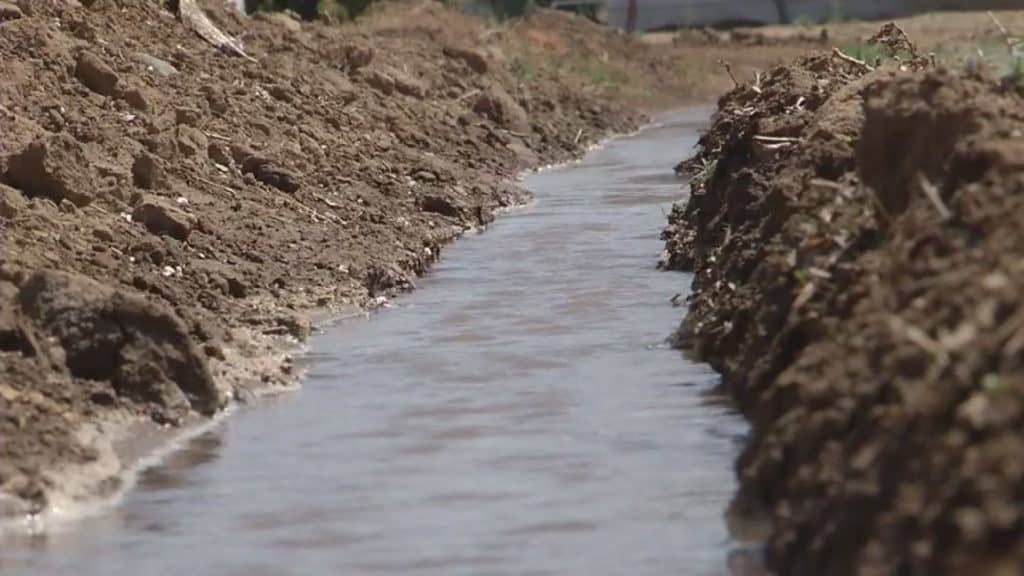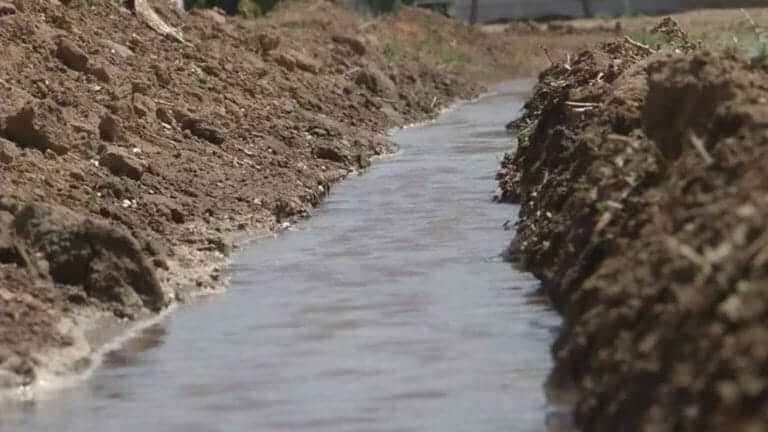Photo: Water flows through an irrigation ditch at the Colorado State University Arkansas Valley Research Center.”Water is obviously a very scarce and precious resource,” Wells said.
COLORADO SPRINGS – Community leaders are looking toward conservation and new technologies as they plan decades into the future to keep delivering water to a thirsty community. With a population of roughly 464,000 residents, Colorado Springs is the largest city in the state not positioned near a river or major water source.
The water system that’s evolved over the decades now stretches across 11 counties and consists of dozens of reservoirs and hundreds of miles of pipelines and other conveyances. The man in charge of keeping track of that increasingly complex system is Patrick Wells, the General Manager of Water Resources and Demand Management for Colorado Springs Utilities.
Population projections contained in the Integrated Water Resources Plan published in 2017 estimate the city will reach 700,000 residents over the next 50 years. Wells said newer water sources such as the Southern Delivery System will accommodate that growth early on. However, additional sources will be needed in later decades.
“We’ll need about 50 percent more supply to meet the customer demands and address these water […]
Full article: State of Growth: conservation and technology critical to meeting future water demand
More about water in Colorado:
- PARCHED: Climate change and growth are pushing Colorado toward a water crisis
- To Save Their Water Supply, Colorado Farmers Taxed Themselves
- Water under Colorado’s Eastern Plains running dry as farmers keep irrigating “great American desert”
- Colorado River v. State of Colorado
Related content by our editor:



